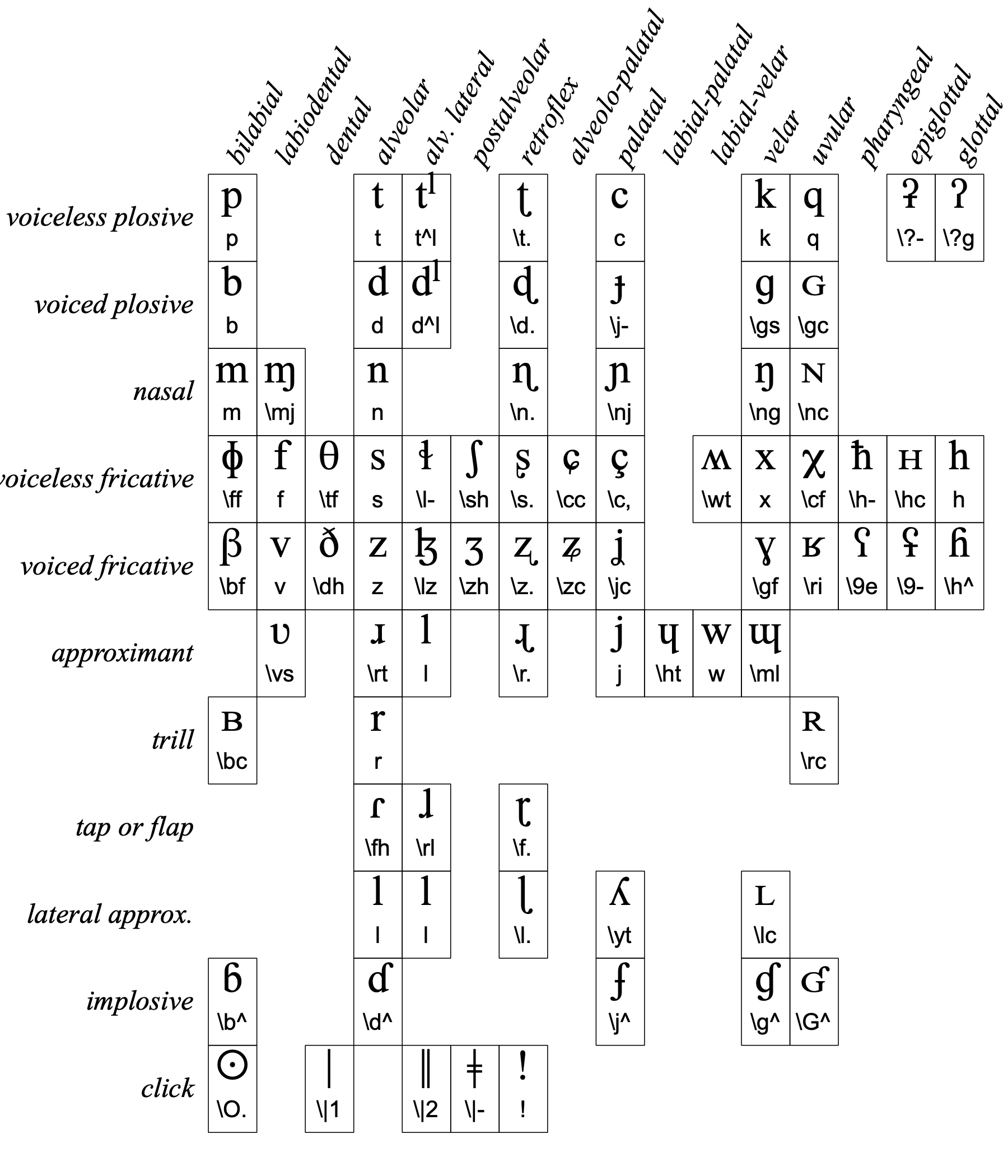
|
To draw phonetic symbols for consonants in the Picture window or in the TextGridEditor, make sure that you have installed the Charis and/or Doulos SIL font, for instance from sil.org or from praat.org. You can either type the symbols directly (if your computer has an input method for them), or use the backslash sequences in the following table.

Other consonant symbols:
For most of the codes, the first letter tells you the most similar letter of the English alphabet. The second letter can be t (turned), c (capital or curled), s (script), - (barred), l (with leg), i (inverted), or j (left tail). Some phonetic symbols are similar to Greek letters but have special phonetic (f) versions with serifs (ɸ, β, ɣ) or are otherwise slightly different (θ, χ). The codes for ŋ (engma), ð (eth), ʃ (esh), and ʒ (yogh) are traditional alternative spellings. The retroflexes have a period in the second place, because an alternative traditional spelling is to write a dot under them. The code for ɾ is an abbreviation for fishhook.
© ppgb 20090804